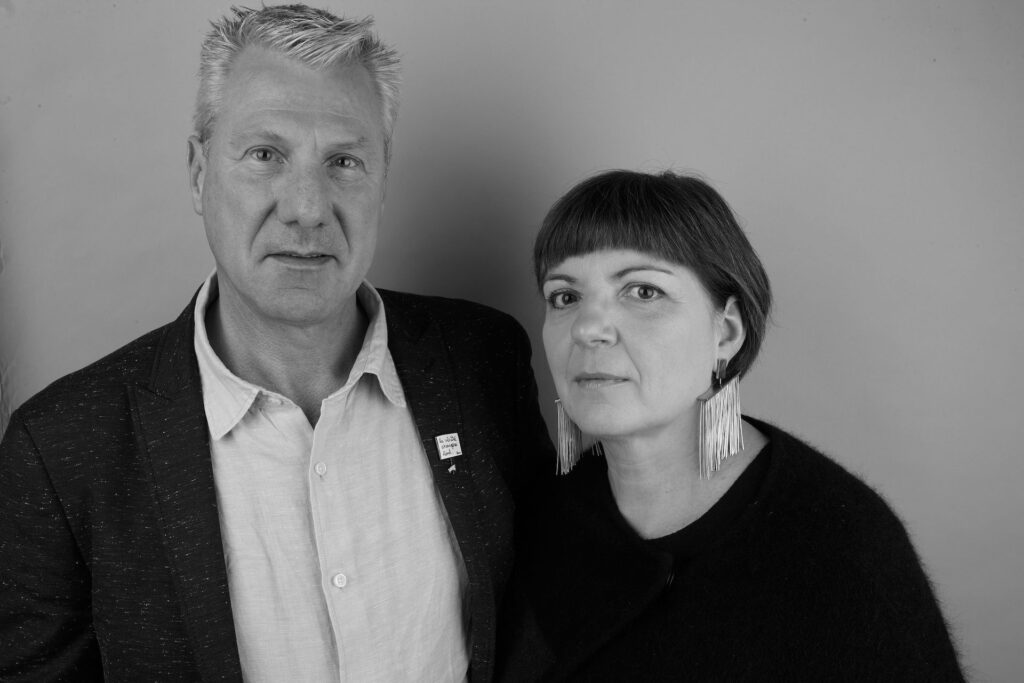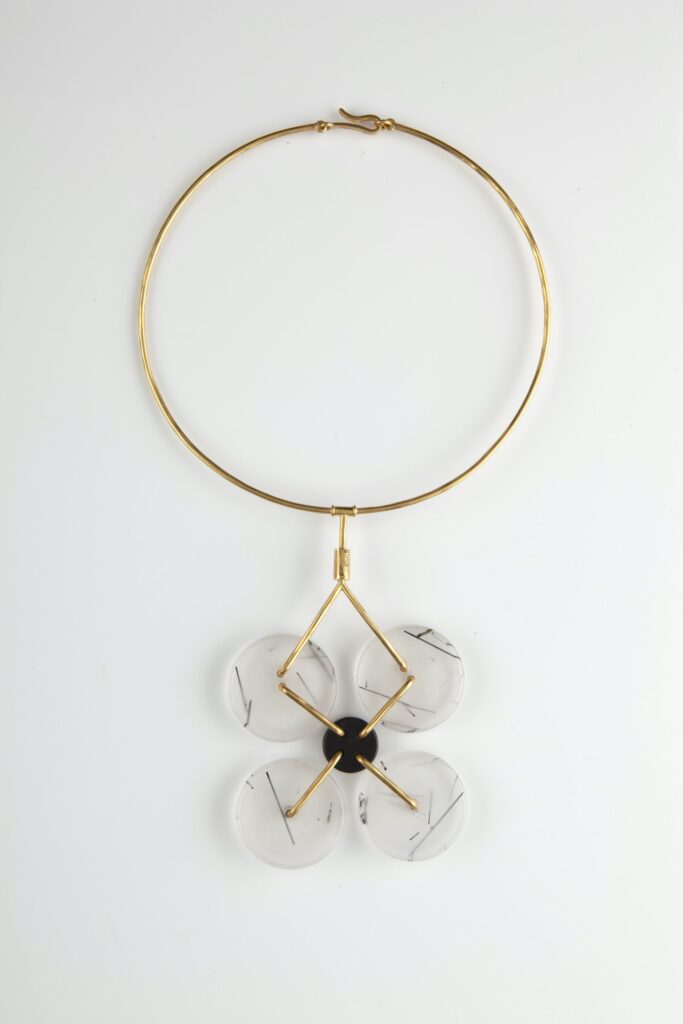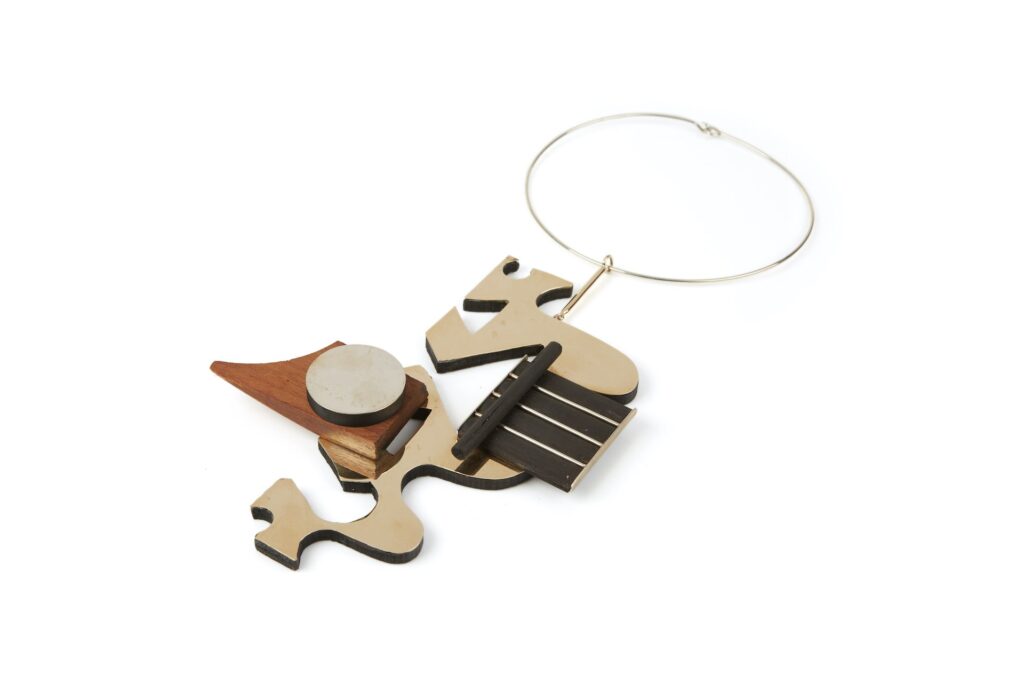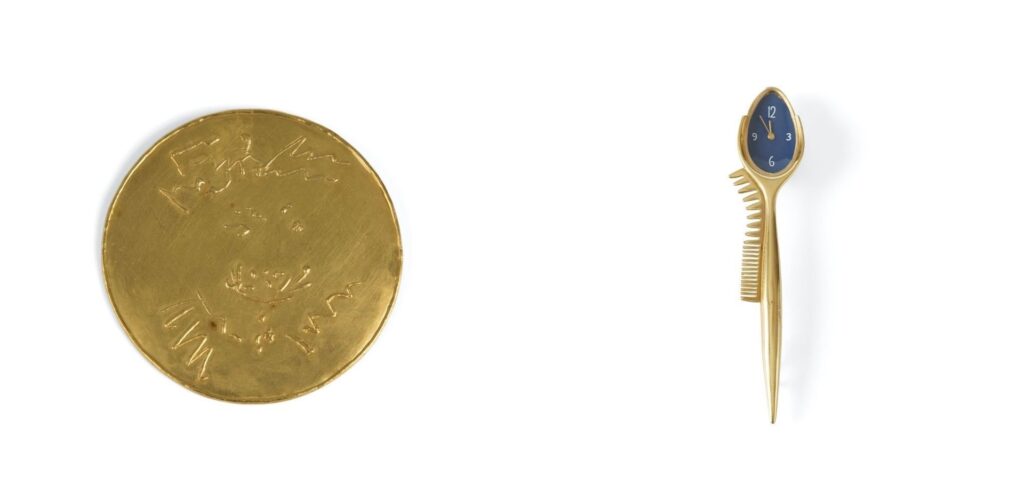
“I have known Didier and Martine for two decades, and their knowledge of jewelry designed by architects and artists is second to none. Their insatiable desire to continuously research and write about this topic is an incredible resource to all us collectors. The best dealers are the ones that educate their clients on the history and importance of the material they are presenting. This is who they are. Several years ago, they introduced me to a group of collectors and creatives in Paris as le grand fromage of this area of collecting; however, I believe they are the ones that deserve this title.”
Al Eiber, Mega Design Collector
When I asked Didier Haspeslagh during this week’s Collecting Design: The Legends why so many architects throughout history have loved designing jewelry, he responded that it is because jewelry is often used as a testing ground for architectural ideas—like an easier, faster, and much smaller version of a building. As his peers testify, he is the legend, the ultimate expert on art jewelry created by leading artists, sculptors, and architects of the 20th century. Since co-founding his London-based gallery, Didier Ltd., along with his wife Martine in 2006, Haspeslagh has garnered an international reputation for sourcing exceptional pieces that all testify to the greatness of art jewelry. The works in his collection represent visionary, revolutionary architectural forms, scaled to fit the human body. And the best of them capture the creators’ radical sensibilities.
At Didier Ltd., you will not find jewelry encrusted with diamonds and other precious stones. Nor will you find examples created by the greatest jewelry houses of the 20th century, fashion jewelry, nor pieces that carry great value for the materials they are made of. Instead, the Haspeslaghs and their collectors seek out jewelry remarkable for its artistic value, most preferably cutting-edge works by world famous figures like Alexander Calder, Ettore Sottsass, Harry Bertoia, Louise Nevelson, and Salvador Dalí. They are willing to pay six figures for necklaces, earrings, and bracelets made in more mundane materials such as copper, brass, and steel when the formal and conceptual expressions meet their elevated standards.
Hespeslagh shared with us the evolution of collectible jewelry from the mid-19th century through the end of the 20th century. The first part of his talk focused on architect-designed jewelry and the second on artist-designed examples. In both cases, we could clearly discern the signature formal languages of creators.
The Arts & Crafts movement in the latter half of the 1800s, Hespeslagh told us, championed unity of the arts and the creation of Gesamtkunstwerk environments, an ethos that inspired many architects to design jewelry that corresponded to interior furnishings and clothing. The most famous and productive creator of this era was Viennese architect Josef Hoffman, co-founder of the Wiener Werkstätte, known for his “total works of art” in which every object of everyday living is integrated under a unified aesthetic expression. It was important to Hoffmann that his clients who lived in his interiors also wore his fashions as well as his jewelry. His squarish metal brooches, embellished only with geometrical and vegetal patterns, stylized leaves, vines, and flowers, mirrored the textiles and wallpapers in the homes that he created. His jewelry was worn by the most fashionable and avant-garde women of Vienna. Today Hoffmann’s jewelry is among the most sought-after and expensive on the market. A Hoffman brooch, Haspeslagh told us, is easily valued at $250,000.
Following a lull in the first half of the 20th century, artists and architects returned to designing jewelry in the postwar years. The most substantial initiative was undertaken by Italian designer-entrepreneur Cleto Munari in the early 1980s, when he commissioned a series of renowned architects—Mario Bellini, Michael Graves, Richard Meier, Paolo Portoghesi, Stanley Tigerman—to create jewelry collections for his eponymous company; this collection was famously recorded by Barbara Radice’s 1988 publication Jewelry by Architects: From the Collection of Cleto Munari. No architect expresses that momentous project better than Radice’s husband, Italian architect and Memphis founder Ettore Sottsass (1917-2007).
Sottsass stood at some of the most crucial intersections of design history, and over the course of his 60-year-long career he created jewelry that was as dazzlingly eccentric as his other design and decorative arts work. In his early career, his jewelry forms were restrained yet powerful. In the 1980s, for Memphis and Munari, Sottsass’s jewelry embodied a more playful and provocative spirit.
As Haspeslagh inducted us into the world of jewelry designed by artists, we learned that this special material has its own scholarship, connoisseurship, and narratives—a rich world populated and propelled by passionate collectors, museum curators, and design critics. We learned that this is not merely the type of jewelry that a man buys a woman as a romantic gesture; rather it is collected just like art for its outstanding achievement in wit, imagination, and artistic genius. American sculptor Alexander Calder created his first piece of jewelry at age 7 and continued to do so throughout his career. Another American sculptor, Louise Nevelson, created jewelry out of scrap wood before she found professional success. Many famous artists, including Picasso, Bourgeois, and Dalí, all created jewelry as a laboratory for their more well known artworks.
All and all, Haspeslagh opened a new world of knowledge for us. As Mark McDonald, another legendary expert in art jewelry, once told me: “Didier is the gold-standard for our business. As a seasoned veteran of gallery exhibitions, fairs, and jewelry-related publications, I am continually impressed (and not a little jealous) with the extraordinary quality and depth of the work he offers. His attention to detail never disappoints; his fair displays are spectacular, and his focused self-produced catalogs always illuminate and educate. It is always exciting to see what Didier has for sale. I am grateful that I have had the opportunity to learn a great deal about the history of 20th-century artist jewelry from him.”
All images courtesy Didier Ltd. This article was published today in Forum Magazine.






